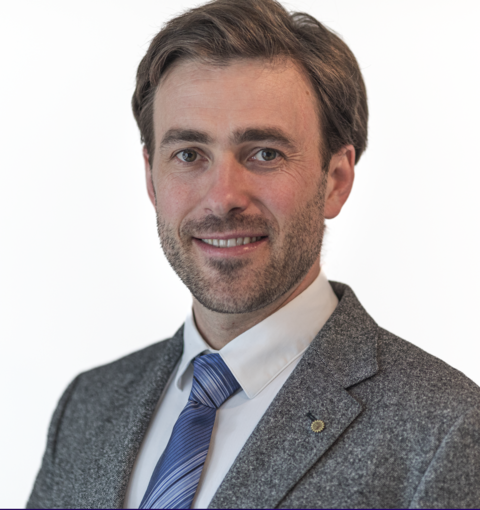© Dr. Georg Pfusterschmied
Metrology in manufacturing compound semiconductors for power electronics
Abstract
Silicon-based power electronics currently dominate the market but are approaching fundamental performance limits. They struggle to efficiently manage high power densities and cannot meet the frequency demands of next-generation communication technologies. Wide bandgap (WBG) compound semiconductors such as SiC, GaN, and β-Ga₂O₃offer significant advantages, including higher power densities, voltage and temperature tolerance, and faster switching speeds, all with reduced energy losses. Devices based on these materials enable smaller, lighter, and more energy-efficient systems compared to their silicon-based counterparts.
Although Europe is well-positioned to lead the transition to WBG technologies, critical challenges remain, primarily related to the materials’ sensitivity to crystalline defects, which currently limit manufacturing yield and operational reliability. A major obstacle is the lack of high-throughput, non-destructive metrology tools capable of detecting and characterizing nanoscale defects with sufficient precision. To ensure widespread adoption and supply chain confidence, the industry needs traceable, standardised measurement techniques that provide quantitative information on defect types, densities, and their impact on device performance.
This project aims to develop novel, traceable metrology techniques for the quantitative characterization of compound semiconductor wafers used in power electronics manufacturing.
Specific Objectives:
- Develop high-speed, non-destructive instruments capable of detecting nanoscale (<100 nm) defects in 15 cm compound semiconductor wafers and dies in under 1 minute, using optical scatterometry, spectroscopy, compressed sensing, or other in-line techniques.
- Establish traceable methods for precise off-line defect analysis in the 5 nm–10 µm range, with spatial resolution better than 50 nm. These may include advanced optical and electrical scanning probe microscopy.
- Correlate high-throughput optical measurements with detailed scanning probe analyses to quantify defect types and densities with uncertainties below 10 %.
- Identify critical measurands and quantify how various defect types affect the optoelectronic properties and device performance of industrially relevant WBG materials such as SiC, GaN, and emerging candidates like Ga₂O₃.
- Promote adoption of the developed techniques and infrastructure by accredited laboratories, instrument manufacturers, standards organisations (e.g. CEN, ISO), and the semiconductor and power electronics industries.
This project brings together national metrology institutes, esearch organisations, and industry partners in a cross-sectoral effort to provide the measurement foundations necessary for a new generation of high-performance power electronics.
As part of the TU Wien subproject, a doctoral research project is investigating a novel technology for the fabrication of low-defect silicon dioxide layers on 4H-SiC. The focus is on the processing and electrical characterization of the SiO₂/4H-SiC interface, as well as its suitability for use in power electronic devices.
Web links
Publikationen
- Nanjappan, C., Pfusterschmied, G., & Schmid, U., Electrical Characterization of the SiO₂/4H-SiC Interface, In Sensor and Measurement Science International (SMSI 2023) (pp. 235–236). https://doi.org/10.5162/SMSI2023/D5.3
Funding agency
- European Union's Horizon 2020 - EMPIR programme - 20IND09 “PowerElec”
Consortium
Koordinator
- NPL - National Physical Laboratory
Internal Partners
- BAM - Bundesanstalt fuer Materialforschung und - pruefung
- BEV-PTP - Physikalisch-Technischer Pruefdienst des Bundesamt fuer Eich- und Vermessungswesen
- CMI - Cesky Metrologicky Institut
- PTB - Physikalisch-Technische Bundesanstalt
- TUBITAK - Turkiye Bilimsel ve Teknolojik Arastirma Kurumu
- NPL - National Physical Laboratory
External Partners
- AIXTRON SE
- CEA-Leti - Commissariat à l'énergie atomique et aux énergies alternatives - Laboratoire d'électronique et de technologie de l'information
- CSC - Compound Semiconductor Centre Limited
- IKZ - Forschungsverbund Berlin e.V. - Leibniz-Institut für Kristallzüchtung
- TU Delft
- TU Wien
- Infineon Technologies Austria AG
